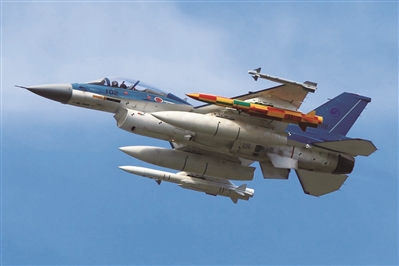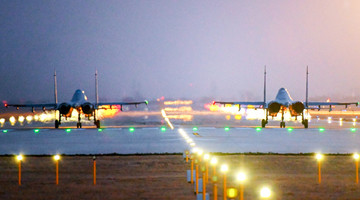
In the past month, Japan has taken constant moves on the research and development of anti-ship missiles by proposing plans to buy ASM-3A supersonic air-to-ship missiles, enhance the range of Type 12 surface-to-ship missiles and develop the stealth anti-ship missile with a shooting range of 2,000km. Eyeing the long shooting range and the supersonic/subsonic performance targeting both sea and land objects, Japan attempts to establish a new-generation anti-ship missile system, which reveals its ambition to break the confines of the “exclusively defense-oriented” policy and create an offensive combat system.
Japan will buy its first supersonic air-to-ship missile
On December 25, 2020, the Japanese Defense Ministry announced to include the new ASM-3A supersonic anti-ship missile procurement plan in the 2021FY national defense budget, saying this was the result of selecting new key equipment.
Japan’s previous anti-ship missiles are all subsonic missiles whose defense penetration performance isn’t outstanding. In 2010, the country began to develop air-launched supersonic anti-ship missiles code-named XASM-3, whose cruise speed exceeded Mach 3 thanks to the combination of the solid rocket booster and ramjet engine. Mounted on an F-2 fighter jet, the XASM-3 weighs 900kg and measures 5.52m in length, equipped with an active/passive radar seeker and a GPS system. To realize the 200km range, it has to contain more fuels, hence a larger size than other air-to-ship missiles of Japan.
The Japanese Self-defense Force (JSDF) planned to buy the XASM-3in the name of the ASM-3 air-to-ship missile in 2019, but postponed the plan in consideration of changes in the naval strengths of surrounding countries. Meanwhile, it upgraded the missile to extend its shooting range further. Since the upgrade cycle was too long, Tokyo launched the ASM-3A supersonic air-to-ship missile with limited modifications for mass production, but analysts said it wouldn’t have marked performance enhancement.
Notwithstanding, ASM-3A is still the first supersonic air-to-ship missile commissioned in Japan, and it will improve the country’s anti-ship missile defense penetration capability given its combat performance equivalent to that of same-type missiles in other countries.
Japan extended the range of surface-to-ship missiles
The Type 12 surface-to-ship missile is a truck-mounted land-based anti-ship missile developed by Japan’s Mitsubishi Heavy Industries in 2012 and an upgrade of Type 88 surface-to-ship missile. It is launched from a six-barrel launcher.
The subsonic Type 12 surface-to-ship missile is 5m in length, 0.35m in diameter, and about 700kg in weight, with the maximal flying speed of Mach 0.9. Adopting combined guidance, the missile applies initial-course and mid-course inertial guidance and GPS guidance, with a strong landform matching ability.
After the missile is launched, it is able to detour along a preset route before heading to hit targets on the sea. It features a long capture distance, high guidance precision, and strong anti-jamming ability while also hitting small targets moving at high speed.
The shortcoming is that Type 12’s shooting range is only 200km, and the actual working radius on the sea is even shorter, so it doesn’t pose a severe threat to vessels or aircraft carrier fight groups. To address this, Japan has extended the missile’s range in disguise.
At the moment, the ship-borne variant of Type 12 – the Type 17 ship-to-ship missile – is already in service, mounted on the Maya-class guided-missile destroyer and the Kumano guided-missile frigate with an extended shooting range of 400km. The air-launched variant is also under testing with the range extended to 300km, and the actual range will be longer, taking into account the carrier plane’s flying range.
Moreover, the Japanese government at the end of last year decided to enhance the Type 12 missile’s range to 900km and eventually to 1,500km, which will turn it into a land-targeting assault cruise missile that can hit military ports and warships there. But it’s not easy to achieve such a long range, which is practically equivalent to developing a new missile.
Japan will develop a strategic cruise missile under the disguise of an anti-ship missile
Japan’s Sankei Shimbun reported on December 29, 2020, that the Japanese government has put forth a development plan for a new type of anti-ship missile with the range of 2,000km. Called the Japanese version of Tomahawk, the new missile will be able to not only carry out anti-ship tasks, but also attack land targets. Public pictures show the new missile has a similar stealth appearance as America’s JASSM and LRASM anti-ship missiles, but with a shooting range twice longer.
Technically speaking, the new-type anti-ship missile will be a sizeable subsonic missile featuring good stealth performance and high maneuverability. America’s JASSM anti-ship missile, for example, weighs as much as 1.1 tons and carries warheads weighing up to 450kg, with a speed of Mach 0.95 and range of over 1,000km.
What Japan tries to achieve is a missile range of 2,000km with an equivalent warhead weight, so the missile will surpass JASSM in size and total weight and reach the class of Russia’s Kalibr-NK strategic cruise missile, which is mounted on strategic bomber, surface vessel and submarine with a 6m length, 1.25-ton weight, 500kg warhead and 2,100km range.
When the country first began to design the new-type anti-ship missile, Japan made it clear it must be capable of attacking land targets, an undisguised revelation of its yearning for establishing strategic deterrence. It’s safe to say that Japan wants to develop a strategic cruise missile in the name of a long-range anti-ship missile.
Sankei Shimbun reported that Japan intends to deploy the new missile on its southwestern islands for “island defense”. With Okinawa-Jima in the center, the missile will cover China’s southeastern coast and the entire Korean peninsula, which is far beyond Japan’s defense demand and contravenes provisions in its Constitution of Peace.
The Japanese government recently decided to put off unlimitedly discussions about “the ability to attack enemy bases,” but it is secretly making preparations to possess it. Kyodo News quoted a JSDF official as jeering that “which targets on earth would the missiles be hitting? If they were launched to attack the cities of another country, wouldn’t that be a deviation from the ‘exclusively defense-oriented’ policy? Japan hasn’t developed a mature strategy yet, but it’s taking significant strides in developing military equipment.”









